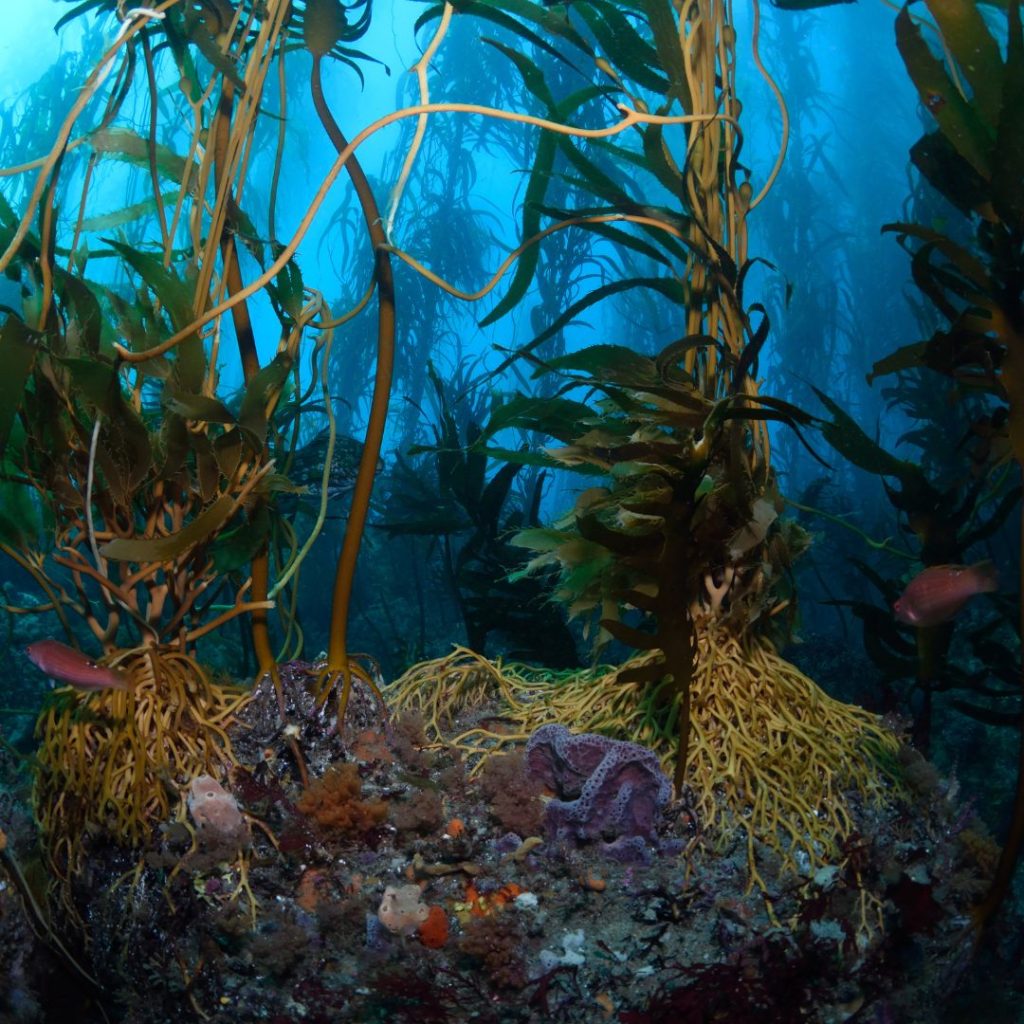Can we stop climate change with algae?

Algae are an underestimated species in our latitudes. Whereas in coastal regions of Europe and Asia, they have long been an elementary part of the diet and a recognized superfood. But algae as a climate saver? Researchers around the world have been studying this topic more intensively in recent years. Algae clean their environment and metabolize greenhouse gases such asCO2 as well as heavy metals, which are trapped in their biomass and sink to the seabed.
One thing is clear: we definitely need to reduce our greenhouse gas emissions to zero. However, according to many experts, this alone will not be enough. Further measures to drasticallyreduce CO2 in the atmosphere are necessary.
The crucial role of algae
Prof. Dr. Thomas Friedl (50), Head of the Department of Experimental Phycology and Collection of Algae Cultures at the University of Göttingen, explains the role of algae as follows: "Almost unnoticed, however, algae play a decisive role in the Earth's carbon dioxide (CO2) cycle. By convertingCO2 into oxygen, algae form the second "green lung" of our planet alongside the tropical rainforest. Compared to the jungle giants, the green water dwellers are characterized by a decisive advantage: They grow much faster. The hopes that some scientists have for algae are therefore immense - and range from specifically influencing the climate and replacing fossil fuels to cleaning the exhaust gases from power plants."
Climate effect of algae
Over 2,000 studies have already attempted to determine the actual extent of the climate effect of algae. Scientists from the Institute of Oceanography in Barcelona (CSIC) have analyzed a huge data archive with 50,000 measurements from all over the world and have come to the conclusion that algae do indeed cool the climate, especially over the oceans of the southern hemisphere.
According to National Geographic, brown algae and bladderwrack are very productive carbon reservoirs and can remove an estimated one billion tons of carbon from the atmosphere every year.
Huge algae farms forCO2 sinks
Marine researcher Victor Smetacek is also convinced of the climate impact of algae. On the one hand, he believes that algae could be used to produce a biological plastic substitute, and on the other hand, they can be specifically cultivated in algae farms to filter large quantities ofCO2 from the atmosphere and store it on the seabed for a long time. This would require a lot of space, which is only available in this quantity in the vast so-called desert areas of the oceans, where there is hardly any life. According to his idea, 300 to 500 meter long pipes would have to be set up vertically in the sea. Nutrient-rich water would then flow through these due to the difference in density, which would serve as a food source for the algae. The company Seafields has already implemented this idea in a pilot project with Sargassum algae and is planning to expand the so-called catch and grow farms into large Sargassum fields in the open sea in the next phase.
Algae as packaging material
"The more algae there are, the moreCO2 we could filter out of the air," says Laurie Hofmann from the Alfred Wegener Institute, who is researching food packaging made from algae together with scientist Dr. Ramona Bosse from the University of Bremerhaven. According to Bosse, the resistant, firm and at the same time flexible structure of algae makes them the perfect material for packaging. In a few years' time, food packaging made from algae species should be on the market. The pair therefore determined which types of algae from local waters with short transportation routes would be well suited to this task.
Dag Kleveland, a Norwegian entrepreneur, already produces algae packaging and sees its main advantages in the fact that the entire plant can be used without producing waste and that it grows quickly. Furthermore, algae require neither fertilizer nor irrigation and do not compete with other products for resources.
Green energy source
Algae could be used in the form of biogas, biodiesel, biohydrogen or bioethanol. Prof. Rüdiger Schulz has been researching a process to harness the energy of microalgae for years. "The hydrogen required comes from the algae and is converted into electricity in a fuel cell, which could power electric motors in the future. The only waste product is water, not carbon dioxide," explains the researcher.
"One day, we could fly over an ocean in an airplane powered by jet fuel derived from seaweed," says Scott Spillias, head of the study, who works at the University of Queensland (Australia) and the International Institute for Applied Systems Analysis (IIASA) in Laxenburg near Vienna, in an interview with APA: "There is a lot of research that is looking very closely at this. It has huge potential." He also explained:
"Algae have great commercial and environmental potential as a nutritious food and as a building block for commercial products such as animal feed, plastics, fibers, diesel and ethanol. Our study found that the expansion of algae farming could help reduce demand for crops and reduce global agricultural greenhouse gas emissions by up to 2.6 billion tons of CO₂ equivalent per year."
Reduction of methane emissions from cows
Adding red algae to cow feed can reduce methane emissions from the cows' farting and belching by 95%, writes zdf heute.
Pesticide-free fertilizer
Algae can be used in agriculture as a pesticide-free fertilizer.
Difficulties still to be overcome
"For example, there is a lot of uncertainty about what the actual impact on the ocean would be. And no one has really figured out how to farm algae on a larger scale. It has huge potential, but my hope is that at least in the West, where it's fairly new, we will develop this industry in a way that is sustainable and really positive, not just for people but also for the planet," explains Spillias.
All approaches are still too inefficient and in some cases too expensive. There is also a lack of cultivation areas for the different types of algae. We can only hope that more will be invested in researching and expanding these many processes so that they can show their positive effects on the climate.






